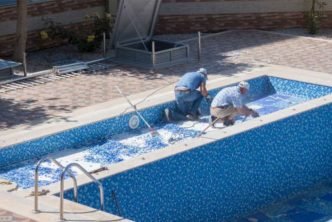Linen has long been associated with luxury, comfort, and elegance. It is used to create a variety of sartorial accessories and clothing since it is a natural fabric formed from the fibres of the flax plant. Unquestionably, it is the fabric of choice for every fashionista. In addition, to being lightweight and luxurious, linen is one of the most durable fabric too. It is surprising how little we understand about linen fabric and why it is a more exclusive offering than regular synthetic cloth, even though it has been around for generations. You can learn everything you want to know about linen from this blog.
Table of Contents
What is Linen?
Linen, a lightweight fabric material, is made from the fibres of the Linum usitatissimum, or the flax plant. It has been used for countless years and is one of the oldest materials ever discovered. Its highly prized qualities are linen’s extraordinary strength, longevity, and inherent lustre. It is recognised for its capacity to keep the user cool in hot conditions and for being breathable.
Different things are crafted from linen, including apparel, home decor, and domestic textiles. Given that it offers adequate airflow and does a fantastic job absorbing sweat, it is well-liked for summer clothes, including shirts, trousers, jackets, dresses, ethnic wear and more. Due to its inherent elegance and usefulness, many manufacturers use linen for tablecloths, bed sheets, towels, napkins, and curtains.
How is Linen Fabric Produced?
The cellulose fibres present in flax plant stalks are used to make linen fabric. This plant only lives for one growing season each year and is an annual crop. It is ready for harvesting within a hundred days after sowing the seeds. Except in severely dry or heated climates, it needs minimal irrigation. The plants are manually dragged or cut from the ground to obtain fibre. Then, the manufacturers remove the seeds using a process known as ripping or sorting. Retting comes next, which aids in separating the plant’s stock from its fibres. Once all the fibres have been distributed to form long (up to 20 cm) pieces, they are spun into yarn and used to weave fabric.
Did you know, Linen production is less than 1% of the world production amongst the natural fibres! Best quality flax is grown only in the European belt of France and Belgium, with a certain climate condition of cold, sun, rain and soil. Therefore, this linen fabrics demand a premium price.
What are Some Qualities of Linen Fabric?
Several distinguishing qualities of linen contribute to its charm and appeal. Here are some of the most common characteristics of linen:
- Linen is Sustainable – Linen is an environment-friendly fabric. Flax plants need less water and pesticides than other crops used to make textiles. Since it can be recycled and biodegraded, linen supports sustainable business practices throughout the ecosystem.
- Durability and Strength – Linen is one of the strongest natural fibres. It is very long-lasting and sturdy. In addition, it retains its quality even after repeated washing and use.
- Breathability – Because it allows air to circulate freely through the fabric, linen is recognised for its remarkable breathability. Due to its ability to control body temperature and keep the wearer cool and comfortable, it is an excellent choice for hot and humid regions.
- Moisture Absorbent – Linen can swiftly absorb and release moisture because of its remarkable moisture-wicking abilities. It is a good fabric for clothing and other fabrics that encounter the skin since it can absorb almost 20% of its weight in moisture without feeling damp.
- Thermoregulation – Linen assists in controlling body temperature because it is breathable and made of natural fibres. It is appropriate for usage all year round because it cools in hot weather and insulates in colder climates.
- Anti-allergenic – This fabric is hypoallergenic and kind to the skin. It is less likely to induce allergies or skin irritants than synthetic fibres.
- Natural Lustre – Linen has a natural lustre and slightly rustic texture. It has an appealing and classic appearance thanks to its distinctive texture and shine.
- Easy Care – Although it can wrinkle easily, linen is typically simple to maintain. It may be hand-washed or machine-washed, getting softer and cosier with each wash.
It’s important to remember that while linen has many appealing attributes, it also has certain qualities that some people might find less attractive, like its propensity to wrinkle quickly and its relatively higher price than synthetic textiles. However, those who value linen’s distinctive qualities frequently view these characteristics as a part of its appeal and do not necessarily see them as downsides.
Linen vs Cotton
Cotton and linen feel and look alike, but they are different. Both are manufactured from plants and are natural fabrics. They are also common fibres used in the textile industry; however, they differ from one another in the following ways:
- Cotton comes from the Gossypium, or cotton plant, while linen comes from the fibres of the flax plant (Linum Usitatissimum).
- Cotton feels softer and smoother than linen.
- Both cotton and linen are breathable materials, but linen is said to be much more effective. Since linen cloth material promotes greater air circulation, it is perfect for hot and humid climates.
- Since it can swiftly absorb moisture and then release it back into the air, linen is renowned for its incredible absorbency. While still absorbent, cotton is not as porous as linen. Cotton tends to hold onto moisture for longer, which might be useful in some applications, like bath towels.
- Compared to cotton, linen is more prone to wrinkles. Cotton is typically less likely to wrinkle than linen because of its naturally wrinkly nature.
- The softness and comfort of cotton against the skin are well recognised. Linen may initially feel coarser but eventually softens with use and washing.
- Cotton is a versatile material frequently used for a wide range of products, including textiles for the home, bedding, and clothing. Although adaptable, linen is commonly preferred for summer apparel, tablecloths, and light upholstery. Both are widely available, and you can also buy cotton and linen fabric online.
- Cotton typically costs less than linen. Since it is a more high-end fabric and requires more labour-intensive production techniques, linen has a higher price point.
- The decision between linen and cotton ultimately comes down to personal taste, the intended usage of the fabric, and the exact texture, durability, breathability, and aesthetic features needed.
Linen in The World of Fashion
There are many ways to use linen in the world of fashion. It is one of the most essential and popular materials used to create a variety of clothing and accessories. Some manufacturers combine linen with high-end materials like cashmere and silk to create luxurious scarves and other fashion accessories. This is why the pure linen fabric price is typically higher than other materials.
Manufactured from linen, thread for sewing is strong and essential for creating various clothing. Linen is frequently blended with fabrics like cotton and other common materials to make clothing for daily use. Linen also makes summer clothes like beach cover-ups, shirts, one-pieces, suits, wraps, and pants.
Conclusion
Linen is one of the oldest fabrics that humans have used over centuries. It is revered worldwide for its pristine nature, comfort, and sturdiness. This fabric can remain in excellent condition even after being used for years at a stretch. It is also one of the best materials that people can choose for clothing purposes.





